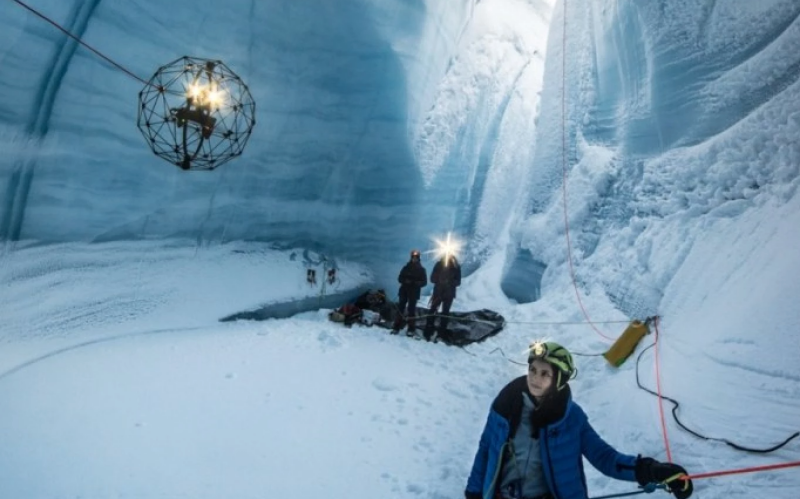Flyability’s indoor drone technology was recently used by a team of researchers to explore and document some of the deepest ice caves in the world, located in Greenland.
The expedition was sponsored by apparel company Moncler and took place over two weeks in 2018 on the Greenland ice sheet, the second largest body of ice in the world after Antarctica. Research focused on an area about 80 kilometers east of Kangerlussuaq, where scientists wanted to study the movement of water deep underground to better understand the effects of climate change on the melting ice.
In a past expedition, scientists were only able to repel to a depth of about 130 meters within the giant vertical ice shafts (called moulins) that led to the underground rivers they wanted to study. On this expedition scientists used the Elios, Flyability’s collision-tolerant drone, to reach the very bottom of the moulins and learn more about the movement of the water and the shape and stability of the ice shafts.
“Entering a moulin that runs 300 meters deep is very dangerous, especially when the conditions farther down within the shaft are unknown,” says Flyability Product Manager Geoffroy le Pivain, who helped organize the mission. “Thanks to its collision-tolerance and other features we’ve developed to help inspectors fly in challenging indoor environments, the Elios presented a unique solution for explorers to reach the bottom of the moulin.”
The mission was led by Francesco Sauro, Professor of Planetary Geology and Exploration at the University of Bologna. He was supported by a team of world renowned geologists, glaciologists, speleologists, geographers, biologists, and Arctic explorers.
In the same part of Greenland where the mission was made, French speleologist Janot Lamberton achieved the deepest ice cave descent ever in 1996, traveling to a depth of 202 meters. Due to climate change, the caves have become too unpredictable since that time to attempt another deep descent. Using the Elios, which was designed for inspections in confined spaces, researchers were able to reach the bottom of one of the moulins, where they discovered a lake on the icy floor.
“At Flyability, scientific discovery and exploration are dear to our hearts,” says Flyability Co-Founder and CTO Adrien Briod. “The core focus of our work is on creating indoor inspection solutions to replace the need for people to enter dangerous, confined spaces. But we also want to help expand the boundaries of human knowledge by accessing places that couldn’t otherwise be reached, and the Greenland expedition really showcases that aspect of our work.”
Source: Press Release

